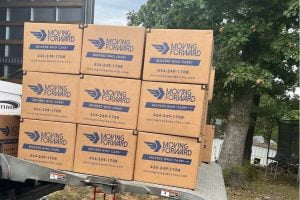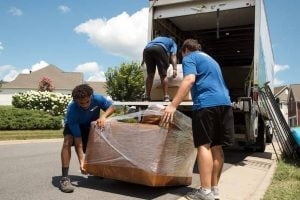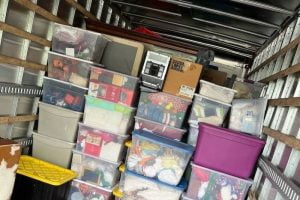Moving to a new home can be both an exciting and overwhelming experience. To make the process smoother, it is crucial to plan thoroughly and stay organized. Creating a detailed schedule weeks in advance can help ensure that no crucial steps or details are overlooked for your house move.

One of the earliest tasks is to start collecting moving boxes and packing items you use infrequently. Labeling these boxes clearly can save a lot of time and frustration when unpacking. Additionally, consider using the move as an opportunity to have rugs, drapes, and slipcovers cleaned, so they are fresh and ready for your new home.
During the actual moving day, keeping snacks and drinks on hand will be essential to maintain energy levels. Having a few essential items easily accessible can prevent unnecessary stress. Planning ahead in these ways can make the moving process more efficient and less daunting.
Creating a Comprehensive House Moving Plan

Planning a successful house move involves grasping the moving process, developing a detailed timeline, and choosing a trustworthy moving company.
Understanding the House Moving Process
Understanding how the moving process works is crucial. Start by listing all the major tasks:
- Sorting and decluttering belongings
- Packing items securely
- Arranging for transportation
Identify specific timing for these activities based on whether the move is local or out of state. For an out-of-state move, additional planning for long-distance logistics is necessary.
Making a thorough inventory of all items can prevent loss or damage, and streamline both packing and unpacking. Keep essential documents (like health insurance details) easily accessible.
Designing a Timeline for Your House Move
Creating a structured timeline can help manage the array of tasks involved in a move. Begin planning about eight weeks beforehand.
Eight Weeks Before:
- Create a detailed moving checklist
- Gather packing supplies
Six Weeks Before:
- Begin packing non-essential items
- Schedule moving estimates from various companies
Four Weeks Before:
- Notify utility companies of your move
- Arrange for any necessary repairs at the current home
Two Weeks Before:
- Confirm arrangements with the moving company
- Pack a suitcase with essentials for the first few days
Selecting a Reliable Moving Company for a House Move
Picking a trustworthy house moving company like Moving Forward Charlottesville is critical for a smooth transition. Start by obtaining multiple on-site estimates from different companies. Assess their reliability by checking reviews and asking for references.
Ensure the residential moving company is properly licensed and insured. When moving out of state, verify that the company has the necessary permits for interstate moves.
Discuss insurance options. Note items of special value, such as electronics or antiques, that might need extra coverage. Written documentation for high-value items can safeguard against potential disputes.
By following these strategies, you can facilitate a streamlined and efficient moving experience.
Pre-Move Preparations for a House Move

When planning a house move, it's essential to focus on organizing belongings, efficient packing, and managing utilities. Address these areas early to ensure a smoother transition. Here's the residential moving checklist for your reference.
Sorting and Decluttering Possessions
Start by sorting through all items in the house. Create categories such as keep, donate, sell, and discard. This minimizes unnecessary baggage and aids in more efficient packing.
Decluttering can significantly reduce moving costs. Items in good condition can be sold through online platforms or donated to local charities.
Consider creating an inventory list for valuable possessions. Note any items requiring special care during the move, such as fragile or antique pieces. This not only keeps things organized but helps manage insurance claims if needed.
Packing Strategies and Materials
Begin packing non-essential items several weeks before the move. Use sturdy boxes, bubble wrap, packing paper, and tape to secure belongings. Label each box clearly with its contents and the room it belongs to. This makes unpacking much easier.
Consider a packing timeline. Start with rarely used items and progress to daily essentials closer to moving day. For fragile items, use extra padding and mark the boxes as fragile.
For clothing, use wardrobe boxes to keep garments on hangers. It saves time during both packing and unpacking. Electronics should be packed in their original boxes if available, or well-padded in strong boxes.
Addressing Utilities and Services
Approximately 4-6 weeks before your move, contact utility companies to schedule the disconnection of services at your old address and reconnection at the new one. This includes electricity, water, gas, internet, and cable.
Notify other service providers and institutions of your change of address. This includes banks, insurance companies, and subscription services. Update your address with the post office to forward any mail.
Additionally, ensure that the new home utilities will be activated before your arrival. This prevents any inconvenience upon moving in and allows for a more comfortable transition.
House Moving Day Essentials

Moving day can be hectic, yet with some preparation, you can ensure a seamless transition. Focus on conducting a final home walk-through and having an essential items kit ready to alleviate stress.
Final Home Walk-Through
Before leaving, it’s crucial to perform a thorough check of every room.
Ensure cabinets, closets, and drawers are empty. Verify that windows are closed and locked, and all lights and appliances are turned off. Confirm that you’re leaving behind any agreed-upon items, such as fixtures or appliances.
Take pictures of the empty home. They serve as evidence of its condition when you left. Make sure you also collect keys, garage door openers, and any security codes to hand over to the new owners or the real estate agent.
Essential Items and Personal Survival Kit
Pack a "go" bag with vital items to keep you comfortable and organized on moving day.
Include essentials like your wallet, keys, phone, and chargers. Bring medications, basic toiletries, and a change of clothes. Non-perishable snacks and drinks are helpful to maintain energy levels.
Have important documents, such as identification, contracts, and medical records, within easy reach. For those with pets or children, pack their necessities to ensure they remain comfortable. Don’t forget a basic toolkit for minor adjustments and repairs.
By keeping these items within reach, you’ll reduce stress and handle any immediate needs effectively.
Adjusting to the New Residence
Moving to a new home involves not just the logistics of the move but also settling into a new environment. Establishing a new routine is crucial for acclimating swiftly and comfortably.
Establishing a New Routine
Developing a new routine can significantly help ease the transition. Initially, focus on identifying key places like grocery stores, pharmacies, and coffee shops. These basics form the backbone of daily living.
Engage with neighbors early on. Building connections in the community can greatly enhance your sense of belonging. Utilize local resources, such as community centers or social media groups, to find events and meetings.
Incorporate familiar activities from your previous routine to maintain a sense of normalcy. Gradually adapt to the new surroundings by integrating small changes daily. This approach mitigates the overwhelming feeling of starting fresh in an unfamiliar place.
















